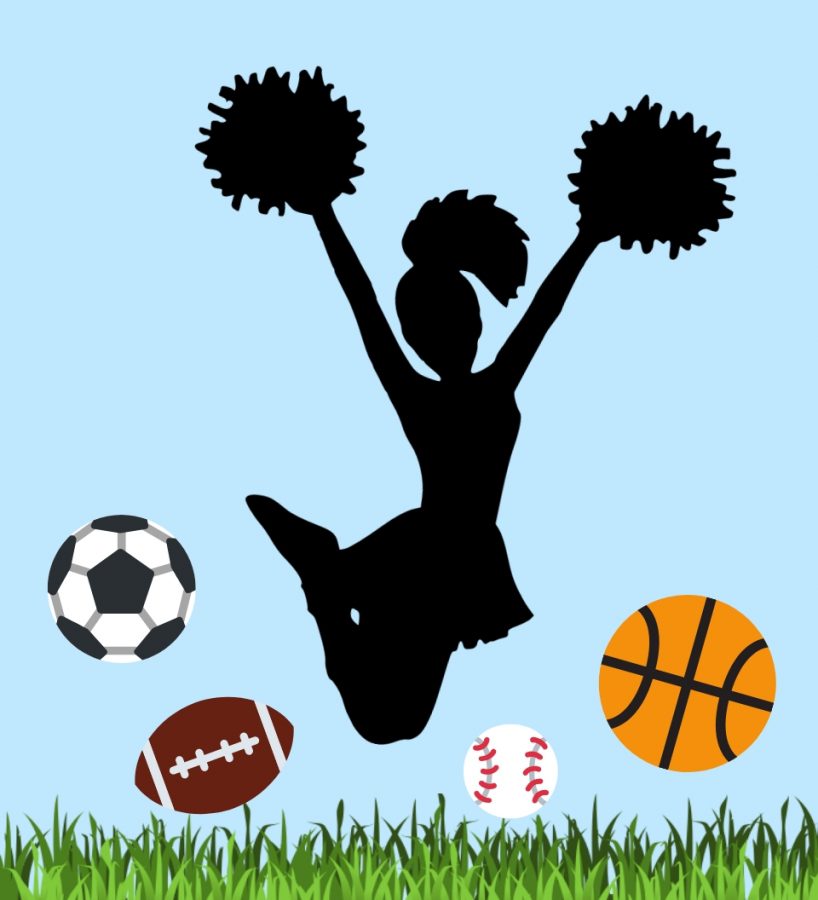Cheerleading: It’s a Sport.
When people hear the word cheerleading, a visual of the movie series “Bring it On,” comes to mind, which had every little girl wanting to be a cheerleader and boys wanting to be near them. However, cheerleading is so much more than short skirts, hair bows, and loud chants. Cheerleading is an orchestra that requires as much strategy, skill, and effort, as any other sport.
“If I could change one misconception, I would tell people it’s way more than what you see,” said, Senior Cheerleading Team Captain Tia Kelly. “If you’ve never seen a competitive cheerleading team and think that cheerleading is simply cheering for other sports and putting on a small show at halftime, I encourage you to dig further. Watch a video of a team from the Cheerleading World Championship, watch a college cheerleading competition, go further than listening to the chants and thinking that’s all we do.”
Athletes are often strongly encouraged to practice good eating habits and exercise on their own time, but it can be difficult for a college athlete to maintain academics and a routine workout.
“Personally, I try to exercise as much as possible outside of cheer, but I don’t have a specific amount of times I exercise.” said Kelly.“The UNH team requires a specific amount of gym hours outside of practice per week, so I maintain this and add extra hours when I can.”
Competitive and program cheerleading guidelines collaborate with the National Collegiate Athletic Association to ensure college cheerleading programs follow the American Association of Cheerleading Coaches and Administrators’ rules. The representation and advocates for cheerleading is overseen by USA Cheer, which nationally governs the sport of cheering in the United States and is known as the USA Federation.
The points system for competitive cheerleading involves a select group of judges, with cheerleading backgrounds, evaluating each team points for jumps, motions, stunting, tumbling, dance, and a cheer. Many argue that the points system for determining a winner is flawed and can hold bias.
Cheerleading stunts consist of a flyer, two bases, and a back spot, which ensures proper stability when lifting a 100-130-pound body into the air at a full extension. It’s not as easy as lifting weights or simply moving your opponent out of your way, the art of stunting requires precision, unison, and constant communication to make sure it sticks.
“It is a very difficult team sport,” said Kelly. “One person makes a tiny mistake and the entire routine is off — a finger slips and someone falls, a second early or late, you hit someone while tumbling. One mistake ruins an entire routine no matter how well you did as an individual, so encouraging your team is crucial.”
Cheerleading is an organization of sisterhood, leadership and discipline. The misconceptions of cheer fail to acknowledge the strength, endurance, and agility cheer builds through the conditioning of stunting and constant movement.
“Cheerleading means a lot to me,” said Kelly. “It’s absolutely more than just a sport. The amount of people I’ve met, coaches I’ve had, things I’ve learned both within the sport and about life in general has been incredible. Cheerleading teaches you to put on a show regardless of what’s happening, regardless of how much pain you’re in and no matter what happened a second before. You keep going. It teaches you the value of a team.”
The amount of work a cheerleader dedicates shouldn’t go unrecognized just because their attire and technique is different than most.
These are athletes who still get the same sore muscles, broken bones, sprains and bruises when they practice hard and perform harder. Showing appreciation to our fellow cheerleading team attributes to showing respect for the craft of cheer and supporting their sacrifice as student-athletes for a sport they love.




